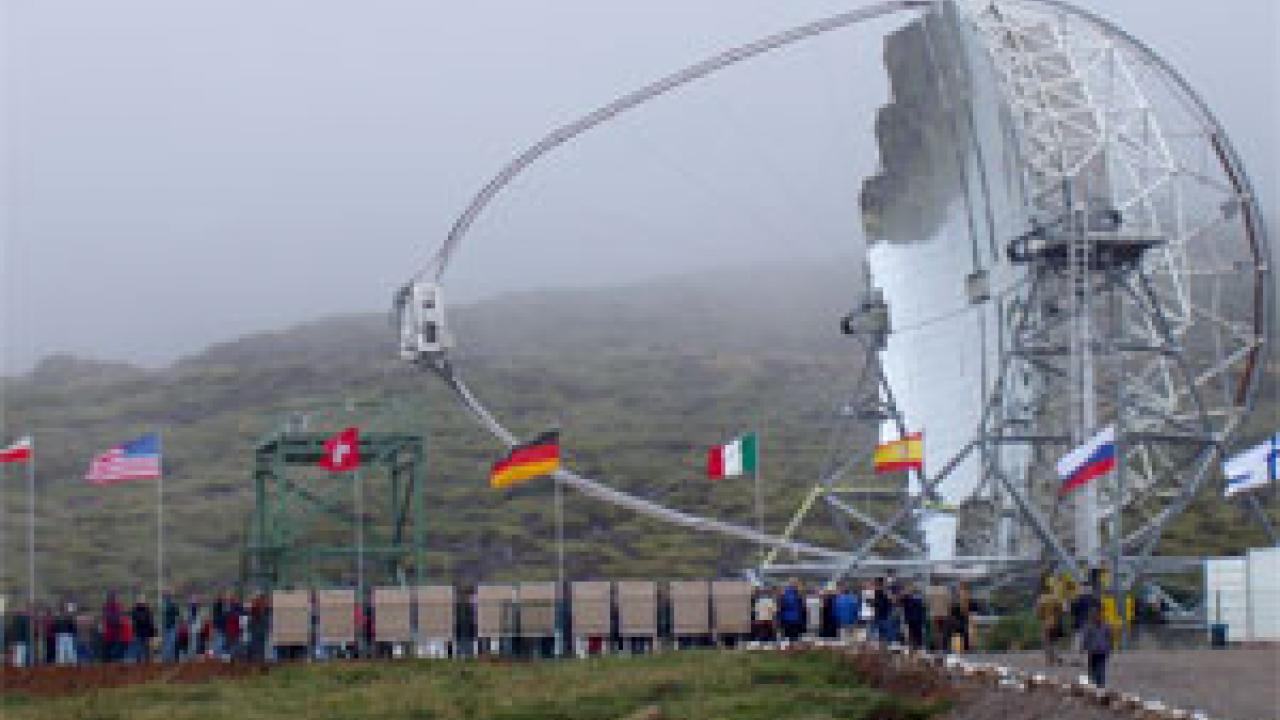Delayed gamma rays from deep space may provide the first evidence for physics beyond current theories.
The MAGIC (Major Atmospheric Gamma-ray Imaging Cherenkov) telescope found that high-energy photons of gamma radiation from a distant galaxy arrived at Earth four minutes after lower-energy photons, although they were apparently emitted at the same time. If correct, that would contradict Einstein's theory of relativity, which says that all photons (particles of light) must move at the speed of light.
"Everybody's very excited," about this result, said Daniel Ferenc, a physics professor at UC Davis and a member of the MAGIC collaboration. Ferenc cautioned that the results need to be repeated with other gamma-ray sources and that a simpler explanation had not been ruled out. But, "it shows that such measurements are possible," he said.
The researchers propose that the delay could be caused by photons interacting with "quantum foam," a type of structure of space itself. Quantum foam is predicted by quantum gravity theory, an attempt to unite quantum physics and relativity at cosmic scales.
The astronomers pointed the telescope at Markarian 501, a galaxy half a billion light-years away that contains a "blazar" -- a massive black hole that gives off bursts of gamma rays. Some of the material falling toward the black hole gets squeezed into jets that burst from the poles of the object at close to the speed of light. These jets fire off flares of gamma rays a few minutes long.
The researchers sorted high- and low-energy gamma-ray photons coming from the object with each flare. Joined by a group of theoretical physicists led by John Ellis from CERN, the MAGIC team showed that the high- and low-energy photons appeared to have been emitted at the same time. But the high-energy photons arrived four minutes late after traveling through space for about 500 million years.
The work has been submitted for publication in Physics Review Letters.
Media Resources
Andy Fell, Research news (emphasis: biological and physical sciences, and engineering), 530-752-4533, ahfell@ucdavis.edu
Daniel Ferenc, UC Davis Physics, (530) 752-0917, dferenc@ucdavis.edu
